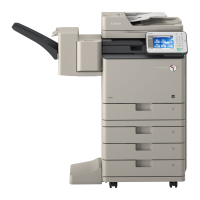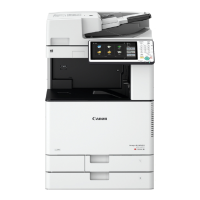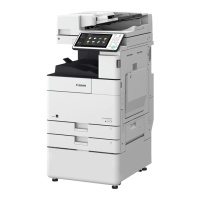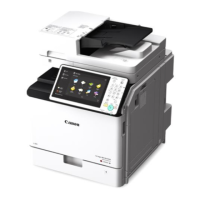imageRUNNER ADVANCE C350iF/C250iF/C350P Series Service Guide
imageRUNNER ADVANCE C350iF/C250iF/C350P Series Service Guide July 2015
Revision 2 Page 26
D. Network Security
The imageRUNNER ADVANCE C350iF/C250iF/C350P Series machines
secure network communications by using IPSec (IP Security), filtering by port
number, wireless security, and network port and application control.
1. IPSec
The IPSec protocol is standard on the imageRUNNER ADVANCE
C350iF/C250iF/C350P Series machines. It ensures that information and
communications over the network remain private by encrypting all
inbound and outbound network traffic.
2. Filtering by Port Number
Port number filtering permits or rejects data packets from entering
specific port numbers or a range of port numbers. Also, IP address
filters to outbound connections can be applied. For example, if functions,
such as Remote Copy and Universal Send are used, System
Administrators can block or restrict users from sending files to specific IP
addresses. This minimizes the risk of data from being sent out of the
company to systems that are not trusted.
3. Wireless Security and Authentication
The imageRUNNER ADVANCE C350iF/C250iF/C350P Series machines
support IEEE 802.1x and IEEE 2600.1 (optional), which provide port-
based authentication and security to Wireless Local Area Networks.
Authentication involves communications between a supplicant,
authenticator, and authentication server. The supplicant is
authentication software on a client device. The client device (the
imageRUNNER ADVANCE C350iF/C250iF/C350P Series machine)
needs the supplicant to provide credentials, such as user
names/passwords or digital certificates, to the authenticator (a wireless
access point). The authenticator then forwards the credentials to the
authentication server (generally a RADIUS database) for verification. If
the credentials are valid in the authentication server database, the client
device is allowed to access resources located on the protected side of
the network.
4. Network Port and Application Access Control
Network Port and Application Access Control enables System
Administrators to set up only the necessary protocols, such as IPP, FTP,
SNTP, SNMP, RAW, LPD, and others for transferring data. These
protocols can be enabled or disabled. The System Administrator can
also disable unneeded services, protocols, ports, and the potential paths
of attack so that attacks on the machine can be minimized.







